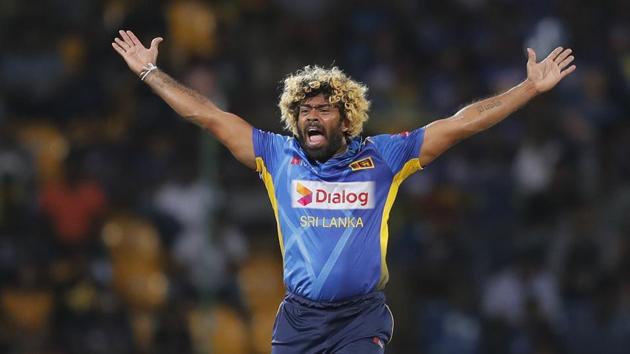Lasith Malinga - This lion keeps roaring in the winter
Malinga’s mastery makes him a sight to behold on the cricket pitch. On Friday, he warmed up by bowling opener Colin Munro, becoming the first bowler ever to take 100 wickets in T20 internationals.
The nickname ‘Lion King’ is for his distinct, dyed hair. And Lasith Malinga acknowledges he is on the last legs as an international player. It can’t get any easier for a pace bowler at 36. The knees and hamstrings complain, and there hasn’t been too much effort to tuck in the paunch. The Sri Lankan stalwart wrapped up his One-day International career with the World Cup in July, and his last of 30 Tests was played in August, 2010.

This lion in winter though can still roar. World cricket may be rivetted to Steve Smith’s fidgeting in the crease, but like the England bowlers who are still trying to breach his defence in the Ashes, Malinga too has showed there is still enough mystery in his unique slingy action. The side-arm can replicate the Sri Lankan pacer’s action to an extent, but the bowling machine or the thrower can only help batsmen get used to the height of the delivery, but not the skill of Malinga—or the swing and accuracy.
New Zealand top-order batsmen discovered all this in Pallekele on Friday when Malinga captured four wickets off four deliveries, the home skipper bowling his team to a consolation win in the final T20 tie. He turned the clock back in some style, having captured four-in-four against South Africa at Providence, Guyana, in one of the high points of the 2007 World Cup. The Proteas still squeaked through by one wicket in that game, but this time Malinga struck early to puncture the innings.
Malinga’s mastery makes him a sight to behold on the cricket pitch. On Friday, he warmed up by bowling opener Colin Munro, becoming the first bowler ever to take 100 wickets in T20 internationals. When he was done, Malinga had become the first bowler ever to take five international hat-tricks. It was his second hat-trick in T20 internationals, while he has three of them in ODIs. Three of his hat-tricks have come at Colombo’s R Premadasa Stadium, two of them in 2011.
The beauty of Malinga’s strikes is the batsman knows what to expect, but to tackle them is a different ball game. The manner of dismissals in each of his hat-tricks explains how lethal his swing, accuracy and pace have undone batsmen. Including the two four-in-four—10 of his 17 victims were bowled, with five trapped leg before. The other two were caught.
Late order batsmen usually are victims as wickets tumble in a flurry. But at Pallekele, Malinga targetted the top order. He removed opener Colin Munro (bowled), Hamish Rutherford (lbw), Colin de Grandhomme (bowled) and Ross Taylor (lbw) off successive balls before having Tim Seifert caught at slip to grab incredible five for six runs.
“I am really happy that I could take four wickets in four balls in T20s as well, because I am playing in the latter part of my career,” said Malinga after the game. Only 100 hat-tricks have been recorded in international cricket, and the Sri Lanka pacer has five of them. He also surpassed Wasim Akram, who has four hat-tricks—two each in Tests and ODIs.
While 4-in-4 is rarified atmosphere—only Afghanistan spinner Rashid Khan has achieved that—repeating it after 12 years only showed Malinga’s appetite for wickets in a bunch is still good.
He has silenced doubters of his fitness and keenness to pull on the national shirt—he was Sri Lanka’s highest wicket-taker at the World Cup with 13 scalps.
At the World Cup, Malinga was also seen teaching Australia all-rounder Marcus Stoinis tricks of his trade, a generosity his Mumbai Indians teammate has often acknowledged. On Friday, it was about leadership as Malinga said he wanted young compatriots to see and learn from his display of skill.






